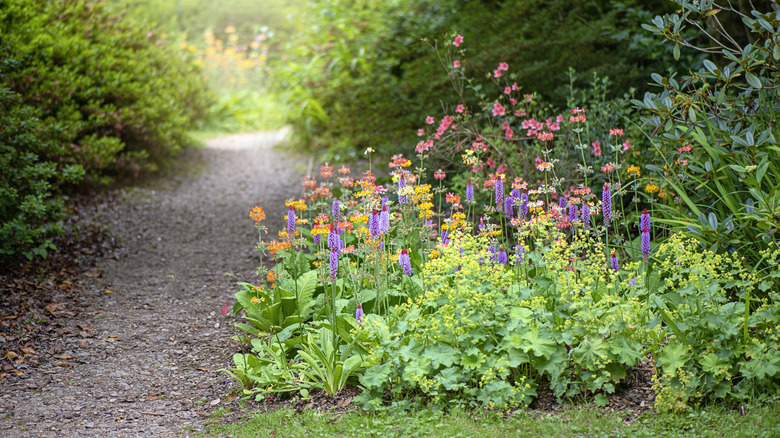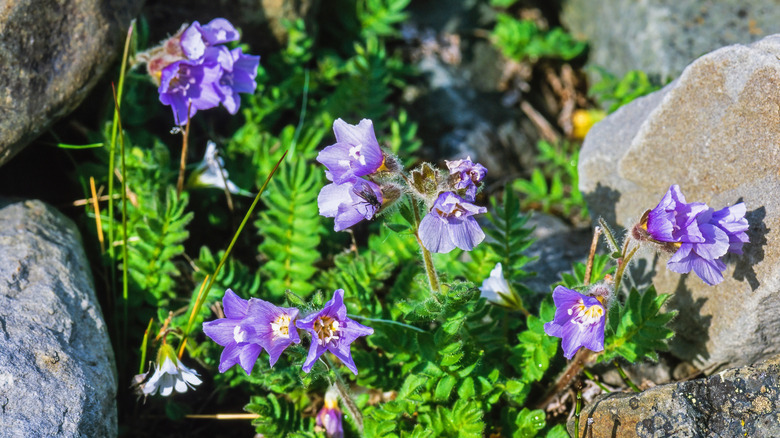Fill In A Shady Garden With A Native Wildflower That's Easy To Grow
While people might love a shady garden in the heat of summer, few flowers prefer the cool shade. But Jacob's ladder (Polemonium reptans), a pretty lavender herbaceous perennial, can thrive in your yard's shadiest spots. Jacob's ladder is one of several shade-safe plants and a wildflower found in USDA Hardiness Zones 3 through 8, though most commonly in the central United States. It's often found in Appalachia and around the Great Lakes regions. You'll most likely see it growing in shady, damp areas like beneath a canopy of trees or near riverbanks.
Its name is directly related to the shape of its green, oval leaves, which are arranged one on top of each other in a design that seems much like a ladder, echoing the ladder reaching to heaven that Jacob dreamed of in the Old Testament. Jacob's ladder is also known for its showy bluish-lavender blooms, a rare pop of cool color in the forests where it grows wild. These blossoms are shaped like a bell.
Jacob's ladder has traditional medicinal purposes, too, and Native Americans were known to use it to treat coughs and colds. Jacob's ladder is a perennial self-seeder and a relatively earlier bloomer, with its showy blooms beginning in April and typically ending by end of June. It grows to be about a foot or so tall and will spread out about a foot as well. The flower is deer resistant, but attracts useful pollinators like butterflies and bees. Not only that, but the native plant can fill in those shady areas quickly ... all without being invasive.
Do this to watch Jacob's ladder flourish in your yard
Jacob's ladder is easy to plant and its grape-scented blooms are among fragrant shade-loving plants that will thrive in the shadier parts of your yard. In fact, the light isn't good for it — the flower will scorch easily with too much heat. Planting it is not generally recommended for states too far south, especially in drier regions.
When planting Jacob's ladder, make sure to do so in pH neutral soil and feel free to add in composting or mulch. Jacob's ladder loves a moist environment in the shade. It's not drought tolerant, so make sure to water regularly, especially in the first year until the plant is mature and established. Of course, like with any plant, don't let it become waterlogged, as that could lead to some kinds of plant disease and infections.
Like many wildflowers, Jacob's ladder is a low-maintenance plant that doesn't need a lot of attention. You can deadhead withered flowers to encourage more blooms. Don't be concerned when the plant appears to die off in the winter. As an herbaceous perennial, it'll be back in the spring. It's a good idea to leave the dead foliage over winter as it can protect the plant's roots during the coldest bits of weather. Save pruning for spring, when you can cut back the spent blooms and stems to make room for newer plants. If you like the look of Jacob's ladder and want to grow more native flowers in your yard, you can create your own wildflower meadow with a little bit of thoughtful planting.

